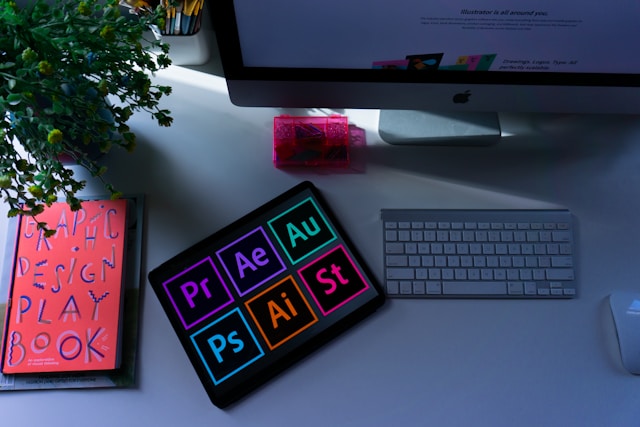Graphic Design
Graphic design is a multifaceted field that merges art and communication to convey messages, ideas, and emotions through visual elements. It encompasses various aspects, including typography, color theory, layout design, and image manipulation.
-
Visual Communication: Graphic design is a powerful tool for conveying complex ideas and emotions through visuals, making it an essential element in marketing, advertising, and branding.
-
Typography: The art of selecting and arranging typefaces plays a crucial role in graphic design, impacting readability, mood, and overall aesthetics.
-
Color Theory: Designers use color psychology and harmonies to evoke specific emotions and create cohesive visual identities.
-
Layout Design: Effective arrangement of elements on a page or screen ensures clarity, hierarchy, and user engagement in print and digital media.
-
Branding: Graphic designers craft logos, visual identities, and brand guidelines that define a company's personality and create a memorable image.
-
Advertising: Eye-catching designs in advertisements grab attention, drive sales, and communicate messages effectively.
-
Web Design: In the digital age, web designers use graphic design principles to create user-friendly, visually appealing websites and interfaces.
-
Illustration: Illustrators blend artistic talent with design skills to create custom visuals that enhance storytelling and branding.
-
Packaging Design: Packaging designers create compelling product packaging that attracts consumers and communicates product features.
-
Infographics: Designers use visual storytelling to present complex data and information in a digestible and engaging manner.
-
Print Design: Graphic designers work on brochures, flyers, posters, and other printed materials, ensuring they are visually appealing and effective.
-
Motion Graphics: This subfield involves creating animated visuals, often used in videos, films, and digital content.
-
User Experience (UX) Design: Graphic designers contribute to the user interface and overall user experience by ensuring aesthetics and functionality align.
-
Environmental Design: Wayfinding signage, museum exhibits, and public installations use graphic design to guide and inform visitors.
-
Magazine Layout: Editorial designers curate content, balancing text and images to create visually appealing magazine spreads.
-
Book Cover Design: Graphic designers craft book covers that capture the essence of a story and entice readers.
-
Social Media Graphics: Brands rely on graphic design for creating compelling visuals that engage and grow their online audience.
-
Iconography: Designers create icons that simplify complex actions and concepts in user interfaces and mobile apps.
-
Illustrative Storytelling: Graphic novels and comics leverage visual narratives to convey stories and messages.
-
Evolving Technology: Advancements in software and digital tools continue to reshape graphic design, offering new creative possibilities.












